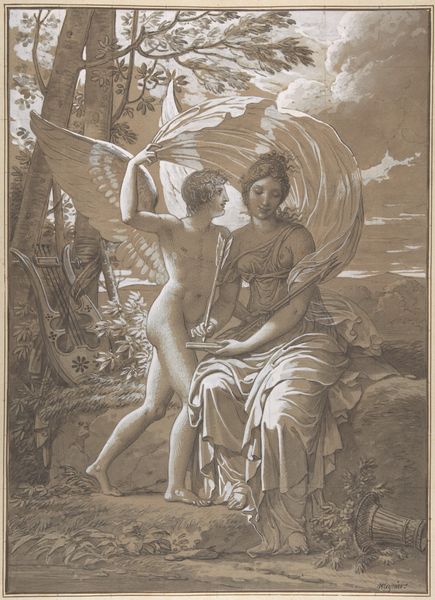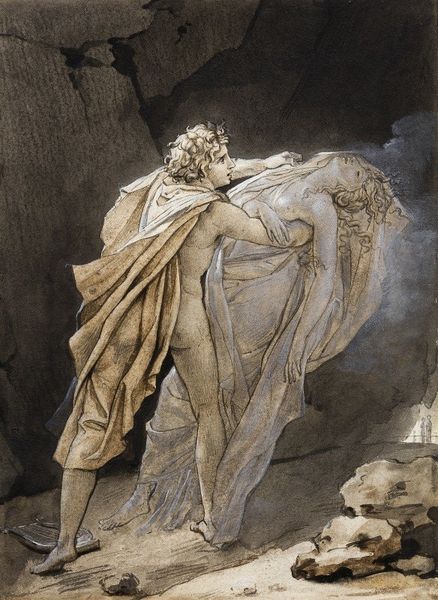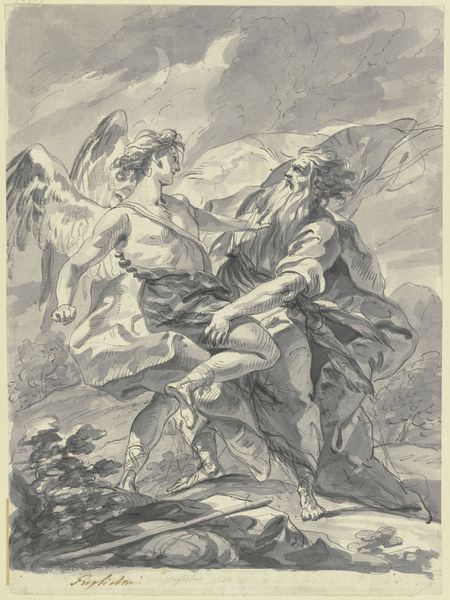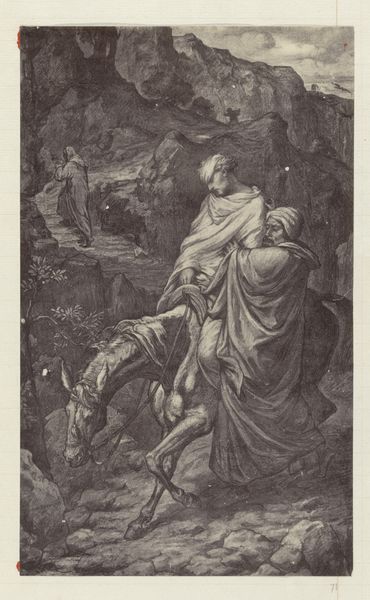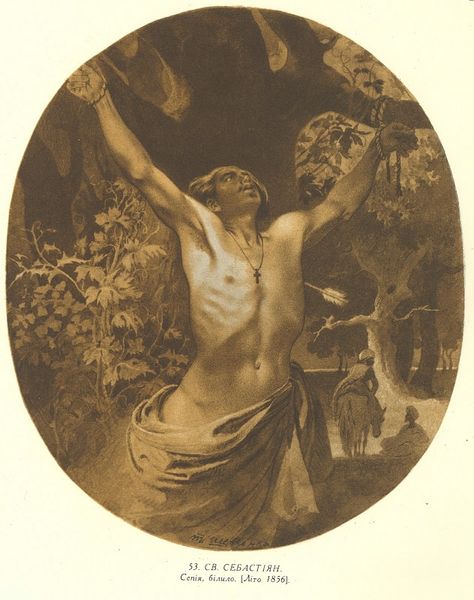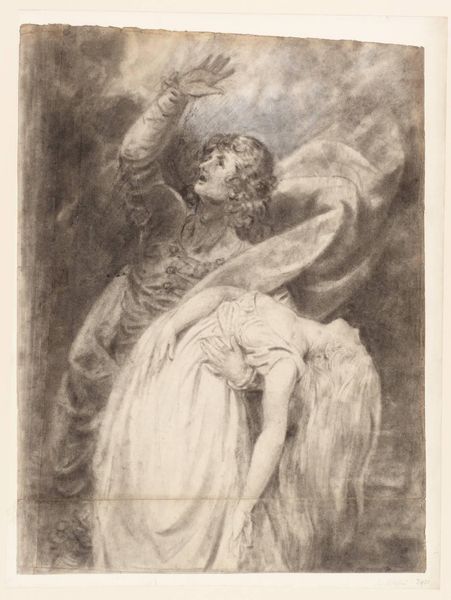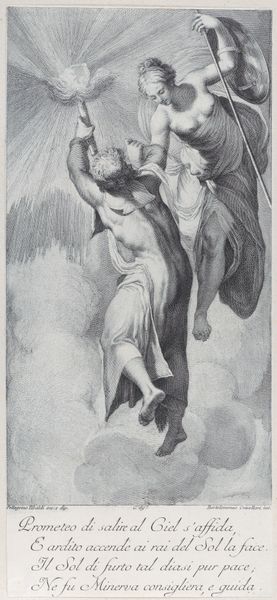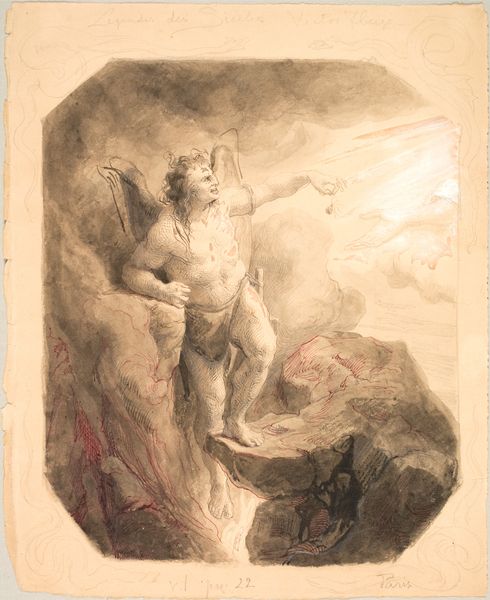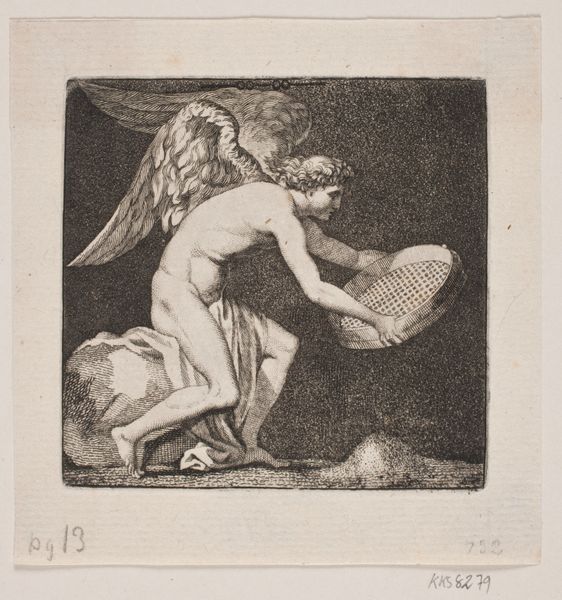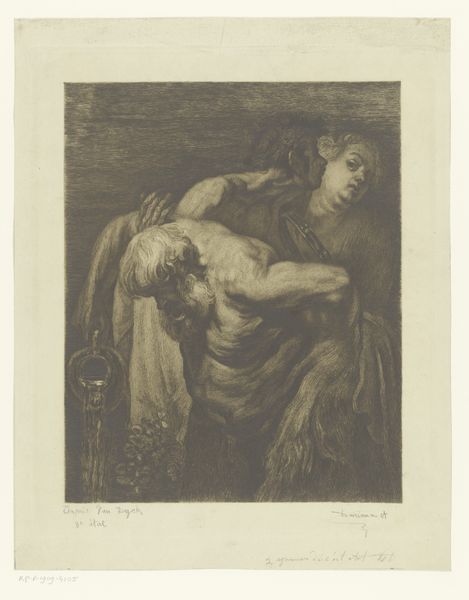
drawing, paper, ink, charcoal
#
portrait
#
drawing
#
narrative-art
#
sculpture
#
landscape
#
charcoal drawing
#
figuration
#
paper
#
form
#
charcoal art
#
oil painting
#
ink
#
classicism
#
romanticism
#
line
#
charcoal
#
history-painting
#
academic-art
#
charcoal
Copyright: Public Domain
Editor: Here we have François Gérard's "Orpheus tries to hold on to Eurydice," made around 1791. The medium seems to be charcoal and ink on paper. What strikes me immediately is the contrast between the dark background and the almost ethereal figures. It feels like a glimpse into a world of sorrow. What stands out to you in this piece? Curator: The power of this image, for me, lies in the weight of its symbols. Orpheus, with his clinging grasp, embodies the futility of resisting fate, a concept that resonated deeply in the Romantic era. Notice the lyre at his feet; what does its presence suggest to you, knowing the myth? Editor: That’s a good point – the lyre symbolizes his music, his power, and perhaps what he’s losing in this moment, his creative inspiration tied to his love. Curator: Precisely. And Eurydice isn't simply a woman being pulled back; she's a representation of loss itself, the unobtainable. The contrast between her almost luminous form and the shadowy abyss highlights this. Consider the cultural memory attached to this tale - a warning against looking back, a reflection on the ephemeral nature of happiness. It taps into primal fears of separation and death that resonate across cultures. Does the starkness of the medium—the charcoal—contribute to that feeling, do you think? Editor: Definitely. The charcoal creates a very dramatic, high-contrast effect that amplifies the emotional intensity and the sense of finality. It’s less forgiving than other media. Curator: Indeed. It is a raw medium for a raw emotion. Seeing it this way underscores how art preserves and interprets these universal narratives. I notice this piece is in the Städel Museum. Editor: I never considered how deeply intertwined the visual elements are with the cultural context. I learned to appreciate that looking for those repeated shapes and symbols can say as much about the cultural values as it does the scene presented in front of us.
Comments
stadelmuseum about 2 years ago
⋮
The tragic love story of Orpheus and Eurydice is one of the great myths of classical antiquity. Vergil described it in the "Georgics", Ovid in the "Metamorphoses", and again and again the material inspired musicians, painters and poets from the Middle Ages to the present to new artistic interpretations. Orpheus − distraught by the violent death of his wife Eurydice − goes into the underworld to convince the god Hades with music to give him back his beloved. His wish is granted under the condition that he does not look for Eurydice when he returns through the underworld. But Orpheus doubts, looks back and thus loses Eurydice forever: "And quickly out of his eyes, as smoke disappears into the air, she vanishes," Virgil wrote. It is precisely this moment that Gérard's dramatically exaggerated composition shows. Orpheus' cloak is thrown into sweeping folds by the sudden movement and exposes the antique naked body, tense in its rotation. Eurydice lies motionless in his arms. Elevations in white colour make her body appear deathly pale. And just as Virgil described it, Gérard surrounds her with clouds of smoke that rise into the darkness of the black-tinted rocks. Gérard has masterfully captured the contrast between living and dead in this drawing.
Join the conversation
Join millions of artists and users on Artera today and experience the ultimate creative platform.
